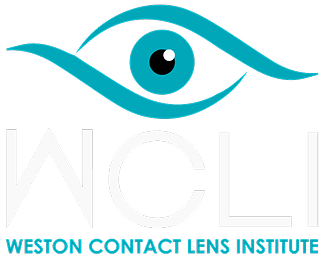Dry Eye syndrome is often dismissed as temporary discomfort or minor irritation. However, when dry eye remains untreated, it can lead to corneal scarring. Eye health depends on a healthy tear film to protect the cornea. This blog discusses the causes of dryness, how it damages the cornea, and the effect of corneal scarring on your vision.
What Causes Dry Eye?
Dry eye develops when the eyes produce insufficient tears or when the fluid evaporates too quickly, leading to an unstable protective tear film on the eye’s surface. The tear film provides more than ocular lubrication; it also acts as a protective barrier that carries nutrients and oxygen to the cornea. Tears also wash away debris and microorganisms to reduce the risk of infection.There are several causes of dry eye, including aging and hormonal changes. People over 50 are more likely to experience dryness because tear production decreases naturally as we age. Pregnancy, menopause, and birth control also diminish moisture production. Furthermore, medical conditions like Sjögren’s syndrome, diabetes, lupus, and sarcoidosis contribute to dry eye.The oil-producing glands in the eyes – the meibomian glands – can become blocked or inflamed, which leads to excessive tear evaporation. This gland dysfunction is prevalent in individuals who have blepharitis and rosacea. Those with a vitamin A deficiency also have an increased chance of developing dry eye.
How Does Dry Eye Damage the Cornea?
Dry eye disease impairs the eye’s natural ability to protect and repair itself. When the tear film is unstable or deficient, the corneal surface becomes dry, inflamed, and more susceptible to injury. Blinking over a poorly lubricated surface causes mechanical microtrauma to the corneal epithelium.Normally, tears contain growth factors and anti-inflammatory proteins that promote healing. In dry eye, this healing response is disrupted. The corneal epithelial barrier becomes compromised, and chronic exposure to inflammatory mediators such as MMP-9, cytokines, and chemokines prevents proper regeneration.Over time, this cycle of injury and incomplete repair leads to chronic inflammation and fibrotic changes in the corneal stroma — resulting in corneal scarring, also known as corneal fibrosis. This scarring can interfere with vision if it affects the visual axis.
How Does Scarring Affect Vision?
The cornea is the transparent, dome-shaped front layer of the eye. Its smoothness and transparency are vital in how light is focused onto the retina. However, scar tissue is opaque and has an uneven surface. Even small scars can interfere with how light enters the eye. In the early stages, corneal scarring can cause blurry vision. As the damage progresses and the passage of light is further impeded, vision loss can become severe.
How Can Corneal Scarring Be Prevented?
To prevent corneal scarring or stop it before it gets worse, it’s essential to seek treatment as soon as possible. Dry eye can be addressed with artificial tears and medications to control inflammation. Protecting your eyes from environmental irritants in dry and windy conditions is also essential. Limiting your screen time and exposure to air conditioning can also reduce additional tear evaporation.To support your eye health, you should consider implementing healthy lifestyle changes. It is essential to stop smoking and avoid secondhand smoke, as it can exacerbate dryness. Be sure to drink plenty of water daily and increase your omega-3 fatty acid intake. If you work on your computer, use the 20:20:20 rule throughout the day. Every 20 minutes, look at something 20 feet away for 20 seconds to rest your eyes and minimize fatigue.Individuals over 50 years old, women, contact lens users, those who have had eye surgery, and autoimmune disorders have a significantly higher chance of developing dry eye and corneal scarring. If you experience constant dryness, pain, redness, or changes to your visual clarity, schedule an exam, especially if you are in one or more of the above groups with a higher risk of dry eye syndrome.
Take Action to Prevent Corneal Scarring
Awareness of the risk factors and causes of corneal scarring helps you recognize symptoms before they escalate. You can manage dry eye symptoms and prevent corneal scarring by implementing healthy lifestyle habits, seeking prompt treatment, and visiting your eye doctor regularly. Dry eye is more than just a mild irritation; it’s a serious condition that can cause irreversible damage to your vision.To schedule an eye examination, contact Weston Contact Lens Institute. Our highly trained eyecare experts can provide the guidance and treatment you need to maintain your ocular health and protect your long-term visual clarity. Don’t delay seeking help until it’s too late.





